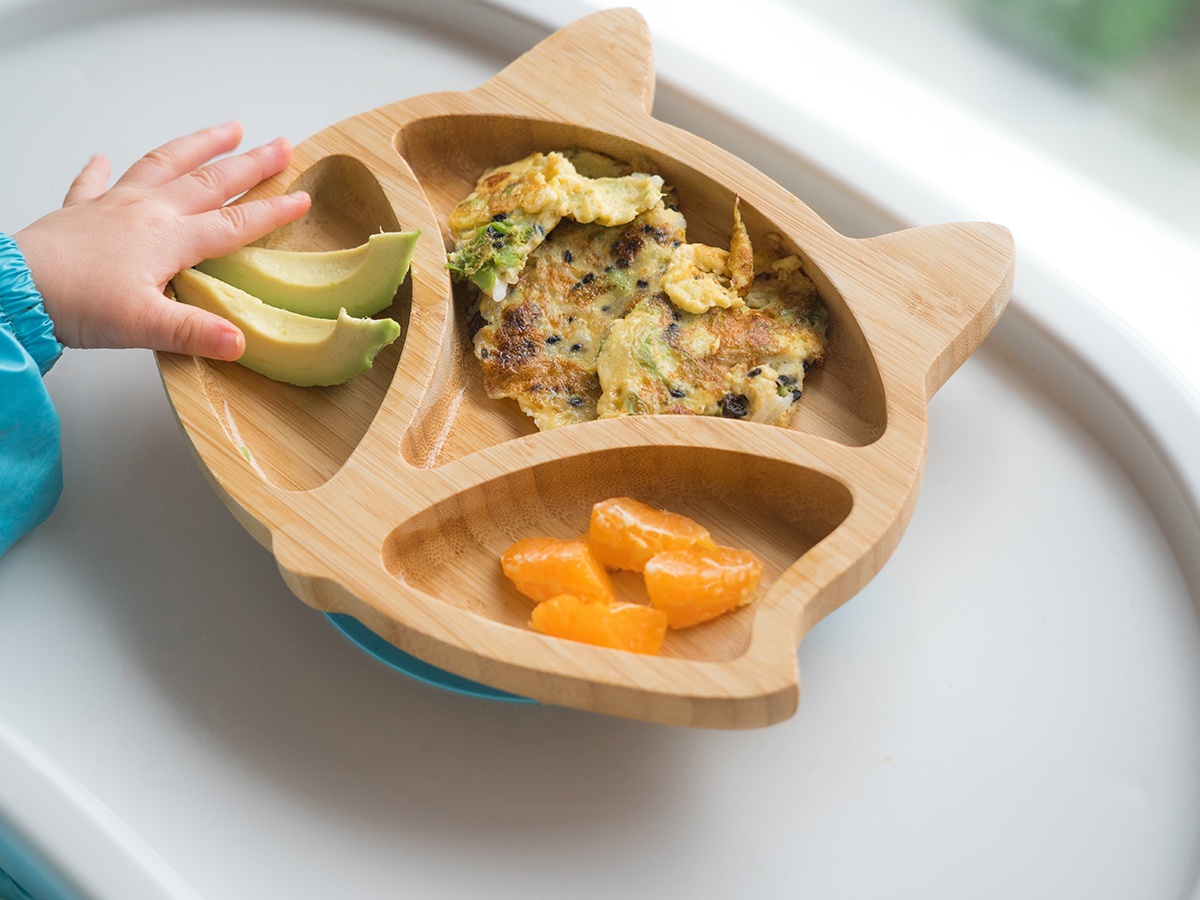“My 5 month old looks hungry. When we’re all at the dinner table together and he watches us eat. Yesterday he actually grabbed my spoon and tried to take the food off my plate! What foods should I start him on?”
I must see variations of this question every month. When is a baby ready to eat? When the baby is, which foods are appropriate? The dinnertime scenario above tells you volumes about the developing neurology of an infant.
Recently we discovered that infants contain a group of brain cells called mirror neurons. Mirror neurons do exactly what you’d think they do- they mimic behavior and imprint emotional responses. If an infant watches you burn yourself on the stove, they get the idea that the appliance is hot- you don’t have to constantly remind them.
Likewise, if they see you sitting around with your spouse enjoyably eating things from a plate, they’ll want to do it as well. You could be eating a bowl full of red crayons, and the baby would reach for the nearest one and put it in her mouth. What you’re witnessing here isn’t hunger; it’s a sign of developmental neurology.
This seems to signal a time when babies are developing the motor skills to try tastes (not meals) of first foods.
What should be on the menu?
In Western culture, baby food companies have parents believing that soft, squishable carbohydrates (rice puffs, pureed carrots, sweet potatoes, mushy peas) are ideal for children before their first birthday.
Again, from a biological perspective, it’s simply not the right direction.
Babies make an enzyme called amylase that breaks carbohydrates into smaller, usable parts during digestion. For the first few months of life that enzyme is secreted in the salivary glands (it’s called salivary amylase) and is one of many components that helps break down the sugars in mom’s milk.
Starting at 5 months the baby’s pancreas begins producing its own version (pancreatic amylase) and drops the enzyme directly into the small intestines for digestion of sugars once they’ve been worked on by the stomach. The body ramps up production from the pancreas while dropping it from the salivary glands, a process that is complete somewhere between 12-15 months of age (see graph below). That tells you the body simply isn’t ready to deal with large amounts of carbohydrate, starches, or sugars until sometime after their first birthday. So what should a parent do instead?

Mother Nature has the answer. Before a baby is even born, her body is producing enzymes to break down the fats and proteins in mother’s milk. The levels of these pepsins (protein enzymes) and lipases (fat enzymes) stay high from birth onward, so baby is always ready to digest these components.
Broth
I encourage parents to think of broths and potted meats as first foods. They’re simple to make, they’re inexpensive, you can make them in bulk with a crock pot, and they can be frozen and reheated easily. I’ve seen some parents freeze the broths into small ice cube trays, put the cubes in a fine mesh bag, and give them to their babies during teething.
If your family eats meat or fish you can use the bones and carcass as your base; if you’re vegan than the cooking action breaks the vegetable starches down into an easier to digest form. It would be a good idea to think about how you can add protein and fat into your vegetable broth (look to Indian and Thai cuisine for suggestions), since these should provide the bulk of the calorie content to baby in the first year.
Low-Glycemic Carbs
When you do add carbohydrates, I encourage you to think Low Glycemic Index. The glycemic index is the rating of how quickly the food is broken into sugar (specifically glucose), and therefore how much the pancreas needs to work to produce the insulin that moves the sugar from the blood into the muscles or the liver for storage. Veggies on the low end of the scale don’t ask much from the developing pancreas, but high glycemic index foods (I’m looking at you, white rice, fruit roll-ups, raisins and bananas) do. Here is a helpful chart of 100 foods put together by the good folks at Harvard.
Don’t be afraid to flavor these, either! Babies have twice as many tastebuds as you do as an adult, and all the flavors of the foods you like have come through in the breast milk this entire time. I have to laugh when I see infants rejecting a spoonful of pureed spinach because I think “Honestly, would you eat that?” That being said, a little flavoring goes a long way.
I mentioned it before and I’ll close with it: Baby led weaning means tastes, not entire meals.
There is some evidence that early introduction of foods before one year helps prevent allergy/sensitivity later in life. From my clinical experience, I can say this is true only if the baby is allowed to properly develop and seal his gut. I advocate for breastfeeding to a year and support extended nursing in my office.
If a child has a history of refluxing chunky milk back up, has gone through episodes of colic, isn’t getting adjusted, goes days between bowel movements, and has not spent the majority of his or her life supplementing with a good quality probiotic, then I don’t have a lot of confidence in the health of that baby’s digestive system. These need to be corrected first before introducing foods, because 75% of the immune system lives behind the walls of the small intestine. If there are leaks, a gut bacteria imbalance, or fermentation from sluggish movement or poor production of enzymes, then the immune system is going to be exposed to these “funny looking” proteins and carbohydrates and sensitize to them as foreign invaders.






